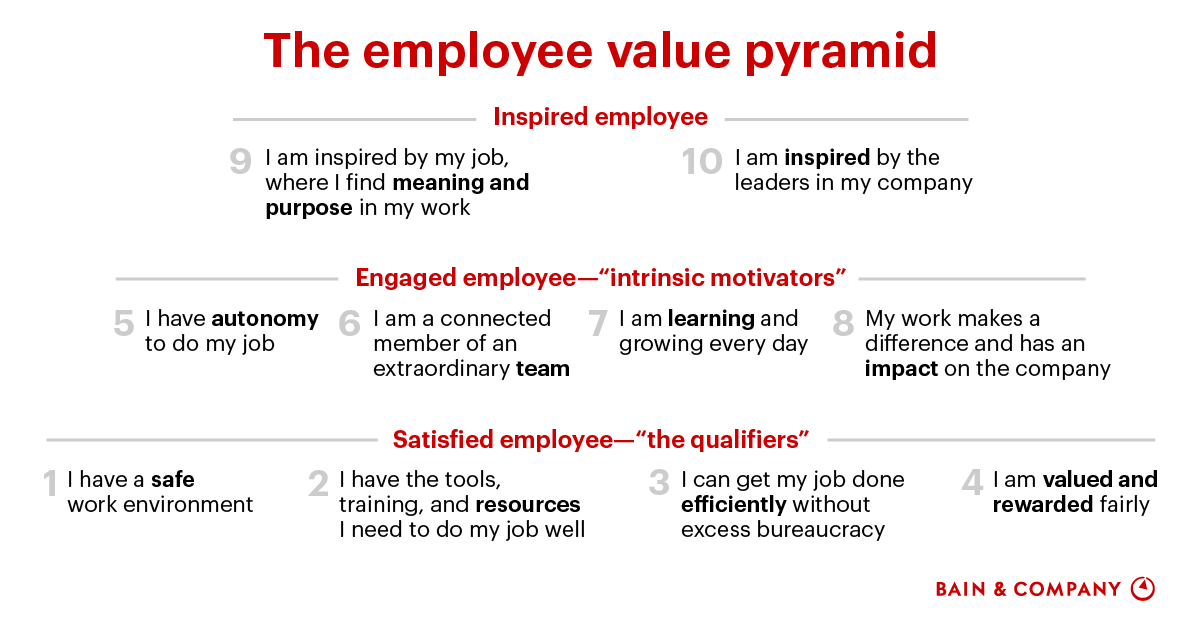A colleague comes to work, works his hours, doesn’t cause any problems, and gets paid at the end of the month. Is everything okay? Maybe. But maybe he’s just surviving at a job where nothing much holds him back. And that can be a much bigger problem for the company than it seems.
The solution isn’t another benefits program or a bowl of fruit in the kitchen. The key word is: engagement.
Hero image: Yan Krukau @ Pexels
What is Engagement and Why Satisfaction Alone is not Enough
Employee engagement is not the same as satisfaction.
While a satisfied employee may be comfortable and passive, an engaged employee is active, motivated and willing to put their effort, heart and mind into their work. Not because they have to – but because they want to.
Psychologists speak of engagement as a combination of three elements:
- Energy and perseverance (vigor): the employee is mentally resilient, active and has a “shot at the goal” at work. They give their effort to it, despite obstacles or fatigue.
- Emotional dedication (dedication): the employee identifies with the goals and values of the organization, feels part of something important and gives their attention and heart to their work.
- Absorption: the employee is immersed in work, drawn into activities to the point of losing track of time – the work naturally enjoys and fulfills them.
Simply put: engaged people believe in what they do and want to be part of something that matters.
What Engagement Brings to a Company
It may sound like a “soft skills” topic. But engagement has a very concrete and measurable impact on a company’s results – and that’s why it should be a solid part of strategic management.
When people are truly engaged in the work they do, not only their behavior changes, but also the outputs of the entire company. And the numbers speak for themselves:
- Companies with high engagement have up to 21% higher profitability.
- Engaged people leave less – turnover can drop by up to 40%.
- Absenteeism also decreases, productivity increases, and the quality of the customer experience increases.
And last but not least: engaged employees become the most credible ambassadors of the employer’s brand.
What Drives Eengagement – and What Destroys it
Engagement doesn’t come from a company brochure. It doesn’t come from a one-time campaign or because management says they want it. Engagement is born and grows in an employee’s everyday experience – in how their superiors treat them, how much freedom they have at work, whether they feel recognized, whether they see the impact of their work, or whether they can develop. Small things like the way feedback is given, the style of communication, or the decision-making process within a team are often a much stronger signal than any internal message on a bulletin board.
What Strengthens it?
✅ Meaning and impact of work
✅ Trust in leadership
✅ Opportunity to grow and learn
✅ Feeling of recognition and appreciation
✅ Good team relationships
✅ Fair treatment and autonomy
And What Sinks it?
❌ Micromanagement
❌ Lack of recognition
❌ Toxic culture
❌ Loss of trust in leadership
❌ Unclear goals and values
How Engagement and Employer Branding Are Related
Employer branding is not just about how the brand looks on the outside, but mainly about how people experience it on the inside.
And this is where engagement plays a crucial role.
1. Employer branding starts inside the company.
- What the company communicates externally (to the public, to candidates) must correspond to what people experience on the inside.
- Engaged employees are the most authentic “proof” that the employer brand is real.
2. Engaged employees are the best brand ambassadors.
- They are proud of their company.
- They naturally share positive experiences – on networks, in personal interviews, in reviews on platforms such as Atmoskop, Glassdoor, LinkedIn.
- Employee recommendations are one of the most powerful recruitment channels.
3. A strong employer brand helps build and maintain engagement.
- When people understand a company’s values, mission, and goals, they are more likely to identify with them.
- Employer branding helps shape a corporate culture that people want to connect with.
If a company promises meaningful work, development, or a great team, but employees don’t experience it in reality, the brand quickly becomes untrustworthy.
Conversely, where engagement is high, a strong employer brand naturally emerges – built on trust, energy, and humanity.
EVP as an Employee Value Pyramid
Likewise, the EVP (Employer Value Proposition) – what the company offers people in exchange for their work – must be based on real employee experience.
Otherwise, it risks being just marketing hype.
According to Bain & Company, the values that employees seek can be divided into three layers – from basic assumptions to intrinsic motivators to inspiration. The more layers a company covers, the higher the likelihood of deep engagement.

Each level brings a different quality of experience – and only their combination creates a strong and sustainable value proposition for employees.
1. Satisfied Employee – “Qualification Prerequisites”
“It can’t be done without it.”
This basic level represents the necessary prerequisites for employees to function well at all:
- A safe work environment: employees do not feel threatened physically or mentally.
- Available tools, training and resources: people have everything they need to perform well.
- Efficiency without bureaucracy: work runs smoothly, the system does not get in the way.
- Fair recognition: employees perceive that their efforts are fairly rewarded.
Without meeting these conditions, higher engagement cannot be expected – people are satisfied, but remain passive.
2. Engaged Employee – “Internal Motivation”
“I’m starting to find meaning at work.”
At this level, elements appear that truly motivate employees from within:
- Autonomy: people have the space to decide how they do their work.
- Teamwork: they feel part of an exceptional team.
- Opportunity for development: they learn and move forward every day.
- Impact of work: their efforts have a measurable benefit for the company and the environment.
This level already builds an emotional bond between the employee and the company – people are starting to see more than just tasks in their work.
3. Inspired Employee – “Top of the Iceberg”
“I am proud of what I do and feel a deep connection.”
The highest level of the pyramid concerns the value and identification level:
- Meaning and fulfillment: work resonates with personal values, gives deeper meaning.
- Inspirational leadership: company leaders motivate with their approach, vision and trust.
This is where true loyalty, willingness to bring innovation and internal motivation that lasts even in difficult times are born.
A strong EVP should take into account all three levels – not only benefits and rewards, but also internal motivation and inspiration. If we want engaged people, just “good conditions” are not enough for them – they want to believe, grow and feel that their work has a real impact.
Conclusion: Engagement is not a Soft Discipline
Talking about engagement does not mean that a company is getting soft.
On the contrary – it means that it understands that its performance depends on its people. And people who are engaged are more efficient, more loyal and inspire those around them.
If a company wants to grow, innovate and be competitive in the long term, it must ask:
“How many employees really want to be part of what we do?”
What You Can Do Right Now
Here are three specific steps to jumpstart your engagement solution:
📊 Launch an anonymous pulse survey: Focus on quickly identifying where people are feeling the least engaged. Choose just a few key questions – the goal is speed and action.
👂 Organize short feedback sessions with teams: Discuss the results, ask people for their perspectives, and collect specific suggestions for improvement. Even 30 minutes can significantly increase trust.
⚙️ Quickly implement 1-2 small changes (quick wins): Choose actionable measures that give people a clear signal: “We heard you and we’re taking action.”
Don’t forget to communicate openly about the changes.
Engagement isn’t built with a campaign, it’s built with culture – and culture is built with actions, not words. Start where you are – with what you can influence.
Build Your Employer Brandwith Quality Content
A strong employer brand doesn’t happen by accident. It needs consistent, engaging, and strategically driven content.
That’s exactly what we can help you with. As part of our content service, we’ll create articles, videos, social media posts, and internal communications for you.
Simply put, everything that really brings your brand to life.

I enjoy connecting people who belong together, supporting their cooperation and inspiring them to find new solutions. I help companies create an attractive employer brand. I am interested in design thinking, lean approaches and agile marketing. You can also meet me as a lecturer at our workshops.



